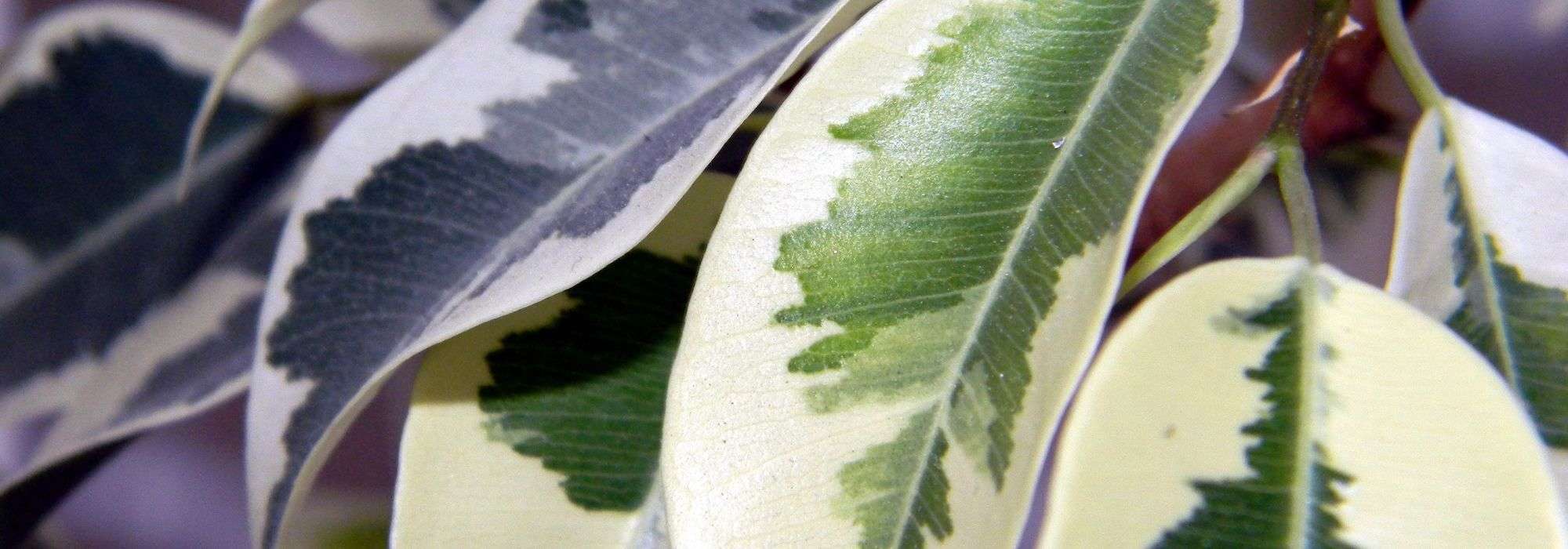
7 variegated shrubs to have in your garden
Bright, graphic, colourful varieties
Summary
Variegated foliage brings brightness and originality to gardens. They break green monotony, add depth and create focal points that are sure to catch the eye. Whether marginate, punctate or appearing as splashes, variegation injects a strong graphic element, further enhanced by varied hues, sometimes even changing through the seasons. In some cases, stem colour, scented flowering or decorative berries provide significant added value.
Here is a selection of 7 shrubs with very decorative variegated foliage: tried-and-true classics to plant in your garden without hesitation!
Willow 'Crevette'
This charming Japanese variety is known as the shrimp willow because of the shades its fine foliage takes early in the season. Salix integra ‘Hakuro Nishiki’ indeed sports a very unusual pink in spring, then its colours gradually develop into luminous green-and-white variegation. As an additional decorative asset, its shoots take on a red tint in winter, making this bush attractive all year round. To enhance colour of young wood, prune 30 cm from ground every year at end of winter. With rather rapid growth, it naturally adopts a globular habit of 1.5 m to 2.5 m in every direction, but can also be trained as a small tree or formed on a stem.
Very easy to grow, it simply requires fertile, consistently moist soil and dappled light. Too warm an exposure will scorch its foliage. Hardy below -15°C, even tolerating slightly calcareous soils, it is suitable planted in borders and can also be grown in a pot on a terrace.
- To read, our factsheet : “Willow, Salix: plant, prune and maintain”
- Discover, our wide range of willows
You may also read
Shade Bush: Which Ones to Choose?Pittosporum tenuifolium Variegatum
Pittosporum tenuifolium Variegatum is a timeless classic of evergreen bushes with variegated foliage. Its small, slightly undulate leaves are olive green, marginate with creamy white and are borne on fine black shoots. In late summer, tiny dark-red flowers give off a sweet honey scent towards the end of the day. With a dense, compact habit, this Pittosporum responds well to regular pruning, allowing it to be shaped as desired. Reaching 2.5 metres or more, it sits equally well in borders of bushes or in hedges where its bright colouring draws the eye. While it tolerates sea spray very well, it is more sensitive to temperatures below -10°C, but growing in a pot allows it to be sheltered in less favourable regions. Preferring warm exposures, it only requires neutral, well-drained yet moisture-retentive soil.
- to read, our fact sheet : “Pittosporum: planting, growing and pruning”
- to discover, our collection of variegated Pittosporum
Discover other Variegated foliage shrubs
View All →Available in 0 sizes
Available in 1 sizes
Available in 1 sizes
Available in 1 sizes
Available in 1 sizes
Available in 2 sizes
Available in 1 sizes
Available in 1 sizes
Available in 1 sizes
Available in 1 sizes
Variegated white dogwood
Cornus alba Sibirica variegata combines ornamental qualities. Indeed, this variety of dogwood has deciduous foliage that turns purplish in spring, then grey-green variegated with white before colouring autumn in shades of pink and purple. In May and June, the bush produces a discreet but melliferous flowering in cymes of white tinged with yellow. This is followed by pretty white berries that turn blue as they ripen. As if that were not enough, the bush lights up winter with its brightly coloured stems, a vivid glossy red, adding cheer. Lit by low sun and set against a dark background, alongside other dogwoods with coloured wood, hellebores, heathers, fescues and early bulbs, the effect is simply striking.
Fast-growing, this vigorous, sturdy and very hardy (-15°C) dogwood adopts a bushy, spreading and well-ramified habit, and spreads gently without becoming invasive. It thrives in sun or partial shade, in any rich, deep soil, fairly fresh to moist, which makes it an excellent candidate for edges of water features. To obtain very colourful wood, cut them back to about 30 cm from ground level each year at the end of winter. Pruned this way, it reaches about 1 m, but you can leave it to grow freely and achieve a specimen of nearly 3 metres in all directions.
- Read our factsheet: “Dogwood, Cornus with decorative wood: plant and prune”
- Discover our range of Dogwoods with remarkable foliage
You may also read
10 perfect bushes for a seaside gardenPhotinia 'Pink Crispy'
Photinia serratifolia ‘Pink Crispy’ is a superb and very original variety of Chinese Photinia. Its evergreen foliage, dentate, thick and glossy is a very bright creamy white marbled with light green and darker green. In early spring, buds of a vivid red give rise to leaves of an astonishing pink hue. Flowering, in airy cream-coloured umbels, occurs towards the end of spring. The ornamental appeal of the bush is further enhanced by branches also tinged with red. With a compact habit (1.80 m x 1 m), this Photinia is ideal for beginners.
It tolerates drought once established, is rarely affected by disease and has very good hardiness. Plant in deep, cool but well-drained soil, not too calcareous, in sun or partial shade. It is suitable for many uses such as medium-height hedges, groups of bushes, or backdrops to borders. It is also a bush well suited to making topiary, as it tolerates pruning very well, and you can even to grow it in a pot on a terrace.
- To read, our fact sheet : “Photinia: planting, pruning and maintaining
- Discover, our selection of Photinias with variegated foliage.
Variegated Japanese Euonymus
Euonymus japonicus aureomarginata or Variegated Japanese spindle is a bush that provides a permanent display in the garden. Its evergreen leaves, thick, glossy and finely dentate, blend green with a clear golden yellow, making it decorative year-round. With a compact habit, it has a rather upright silhouette, reaching 2 m in height and 1.5 m in width, more if not pruned. However, its growth is relatively slow, which makes it an excellent choice for small gardens or gardeners seeking low-maintenance plants. From May to June it flowers with tiny greenish-white flowers borne in clusters, but their ornamental impact is very discreet. The berries that follow, green at first, ripen to orangey-pink tones in autumn. Japanese spindle grows in any ordinary, fresh but well-drained soil and tolerates lime. It favours sunny to part-shaded positions and withstands frosts down to around -12°C. This evergreen is well suited to pruning, allowing use in topiary as well as hedging, including coastal locations as sea spray does not bother it. In a pot it adorns terraces and balconies and brings year-round interest.
- Read our factsheet: “Euonymus: planting, pruning and maintaining”
- Discover our wide range of variegated euonymus
Japanese maple 'Butterfly'
Acer palmatum ‘Butterfly’ is perhaps one of the most beautiful and most robust variegated Japanese maples. It forms a bush 2 to 3 m high, with an open habit. Its deciduous foliage, small and nicely cut, emerges pale green marginate with a fresh pink in spring, then the colour develops to blend green and cream. The twigs, with a supple, trailing habit with age, are purplish-brown and bear late-summer red, wing-shaped fruits. Like all Japanese maples, this cultivar prefers acidophilous, rich and cool but well-drained soils. Quite hardy, it mainly dislikes heavy, waterlogged soils in winter as well as scorching exposure that burns its foliage. Plant it in dappled shade or morning sun, sheltered from drying, cold winds. Use it to create beds with a Japanese feel, alongside other acidophilous plants, or in a pot on a shaded terrace. It is also well suited to training as a bonsai.
- Read our fact sheet: “Japanese maple: planting, pruning and maintaining”
- Discover our selection of variegated Japanese maples.
Osmanthus 'Tricolor'
Small bush with compact habit, l’Osmanthus heterophyllus ‘Tricolor’ reaches modest dimensions (1.50 m x 1.50 m) making it suitable for gardens of all sizes. Evergreen, its dentate and thorny leaves make it resemble a holly, but their changing colours are more decorative. Orange-pink in spring, they then become bright green splashed with cream-yellow, making it one of the brightest varieties. This osmanthus also offers a long flowering period, in small clusters of white flowers with a delightful jasmine fragrance, noticeable from September to October. Flowers are followed by small fruits of a beautiful dark blue hue. Plant in cool but well-drained soil, in a well-ventilated spot sheltered from severe cold. With slow growth, it tolerates sea spray well but dislikes stagnant moisture at its base as well as overly dry conditions or very calcareous soils.
Its hardiness, which varies according to soil type and exposure, allows it to withstand temperatures around -10° to -12°C. Osmanthus ‘Tricolor’ is well suited to use as a medium-sized defensive hedge or as a specimen plant, in ground or in a pot, but place it close to a walkway to fully enjoy its fragrance. It also tolerates pruning very well, making it suitable for creating bright topiary.
- Read our factsheet: “Osmanthus: planting, pruning and maintenance”
- Subscribe!
- Contents
































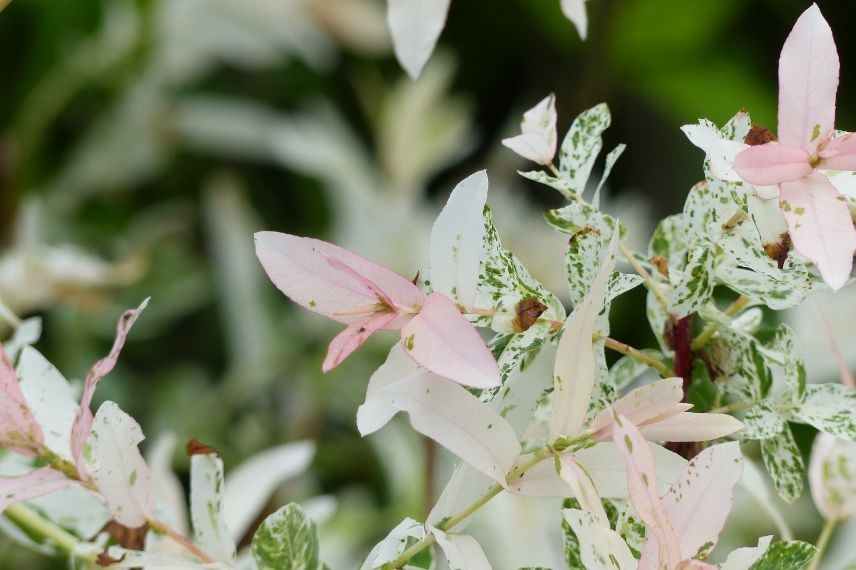



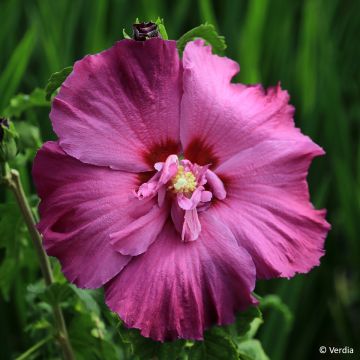
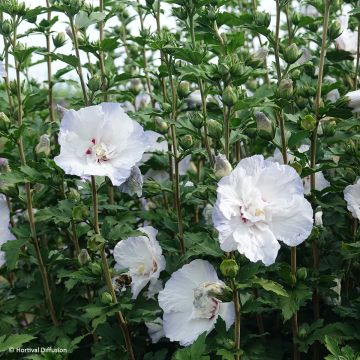


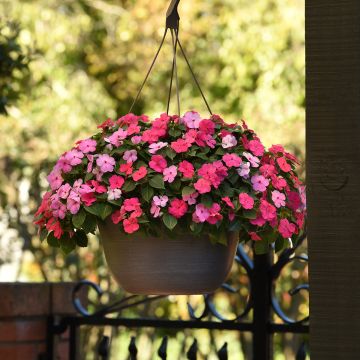
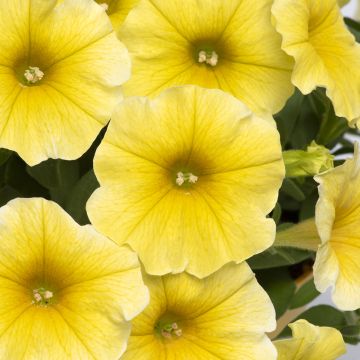
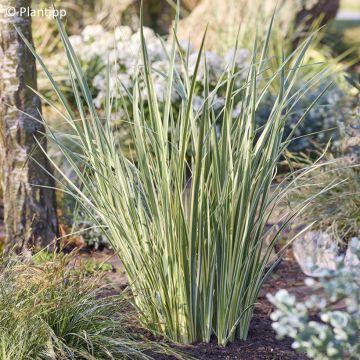
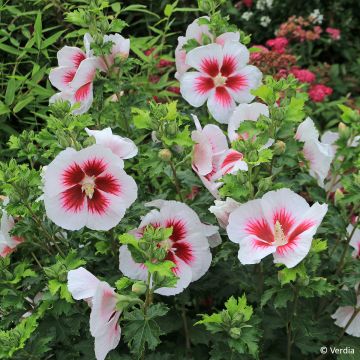
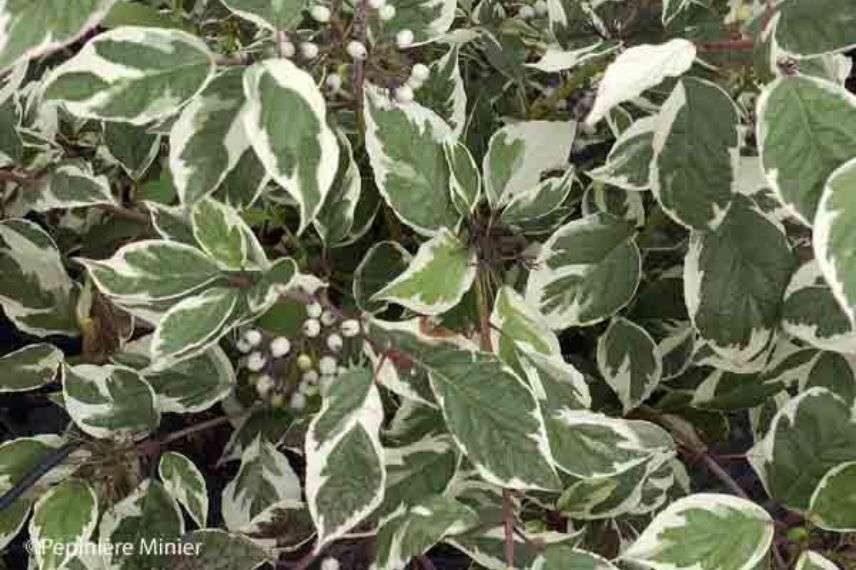
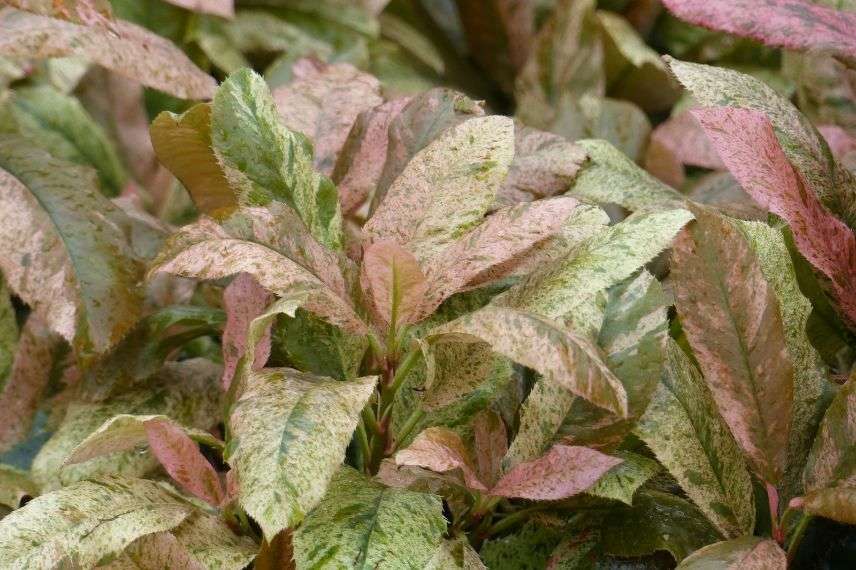
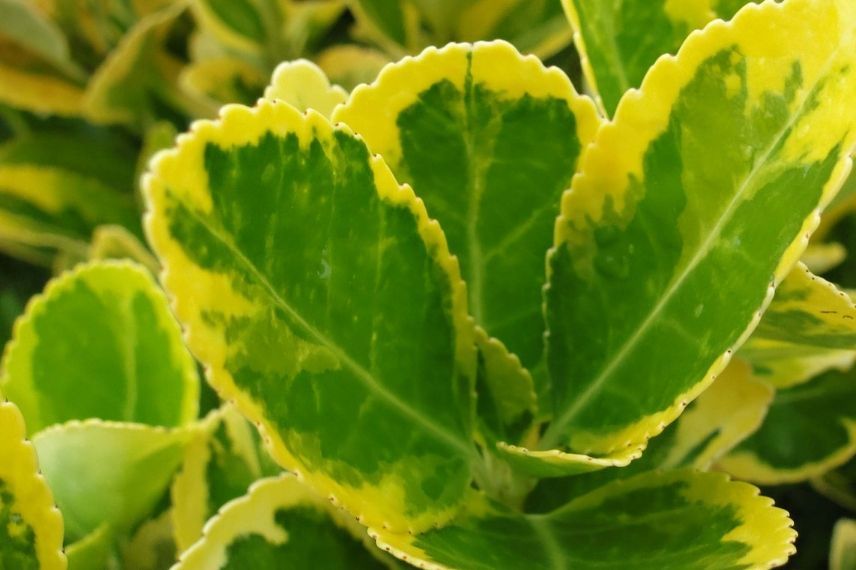
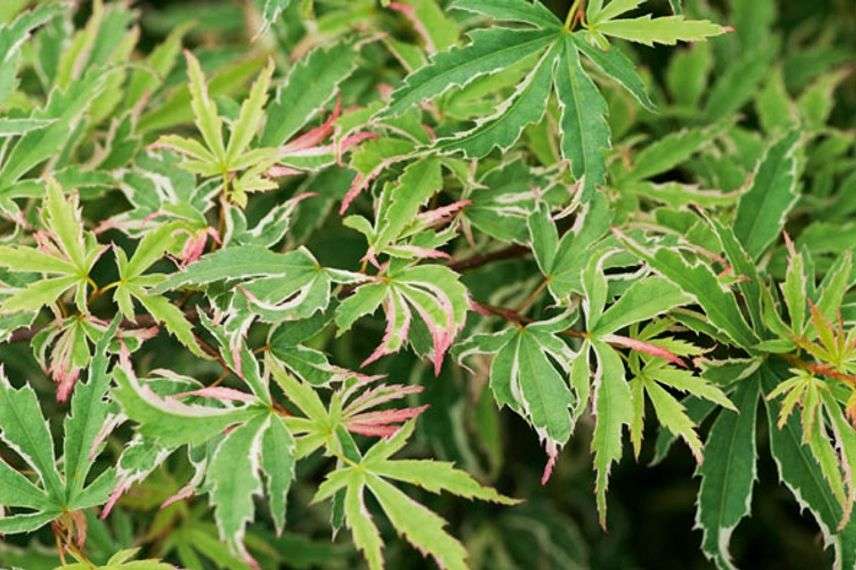
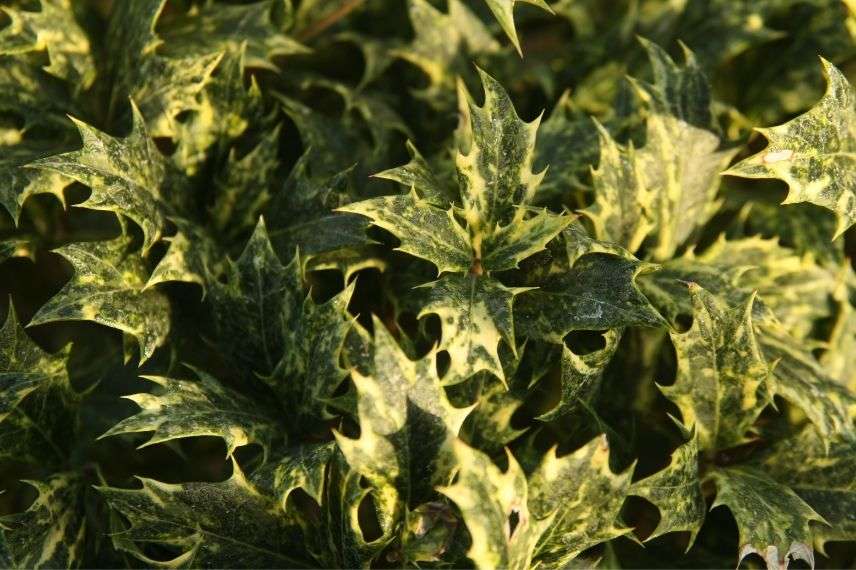
Feedbacks